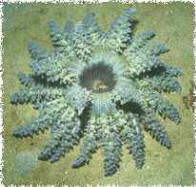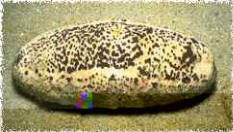|
Diving Medicine is a growing medical specialty that focuses on the study, diagnosis and treatment of illnesses related to changes in pressure and the undersea environment. This area is rapidly expanding its knowledge base as the popularity of diving and undersea exploration continues to explode. A primary focus of diving medicine is to assess individual "Diving Fitness". As more and more people take to the water, there is an increased need to safely prepare or assess ability to dive among patients with various disease states. Particularly, dive physicians must understand how various ENT, Eye, Heart, Pulmonary, Gastrointestinal, Bone and Joint, Hematologic, Endocrine and Metabolic disease states affect the ability to dive. In addition, dive physicians can offer recommendations for people about flying and altitude, physchology and drugs, dental work, women specific concerns, hazardous marine life, long term effects of diving and specific treatment modalities if an accident occurs.
The primary accidents occuring in diving typically deal with effect pressure has on the various gases in your body. Most dive physicians treat patients for problems with equalizing pressure in their ears, sinus difficulties and of course barotrauma due to rapid ascension - "the bends". While these areas of dive medicine are perhaps most critical to understand in terms of patient care and treatment. I have chosen to speak on the more exotic, but rare, injuries from interactions with marine life.
There are a number of hazardous creatures in the sea. Many can cause serious harm to unaware or inattentive divers. Some may even cause death, although this often depends on the amount of venom used, individual reactions, nature of injury and location of accidents (deep water victims often drown). There are four major types of injury patterns from marine life. This presentation will Some basic first aid tips are given, although by far the best policy is not to meddle with these creatures.
CONTACT IRRITANTS
Sea Anenomes and Sea Cucumbers
 While most sea anemones are relatively harmless to humans a few do contain strong toxic substances producing quite severe effects. One of these is the stinging anemone (Actinodendron plumosum), a blue-grey to light brown animal which can look somewhat like a fir tree. While most sea anemones are relatively harmless to humans a few do contain strong toxic substances producing quite severe effects. One of these is the stinging anemone (Actinodendron plumosum), a blue-grey to light brown animal which can look somewhat like a fir tree.
Found under boulders and coral, red bristle worms have numerous fine needle-like bristles which break off when they have become embedded in the skin, causing severe irritation.
 Although sea cucumbers are one of the safest animals on the reef to touch, the numerous white Cuvierian tubules, which some eject when irritated, contain a toxin which can cause blindness if it comes into contact with the eyes. This toxin may also be present on the skin so you should wash your hands after handling these creatures. Although sea cucumbers are one of the safest animals on the reef to touch, the numerous white Cuvierian tubules, which some eject when irritated, contain a toxin which can cause blindness if it comes into contact with the eyes. This toxin may also be present on the skin so you should wash your hands after handling these creatures.
Although known widely as stinging or fire corals, these organisms are, in fact, colonial animals (Millepora sp) more closely related to hydroids. Having a hard coral-like skeleton, they vary in form from large upright sheets and blades to branching, finger-like 'antlers' with a yellow-green to brown colour. Effects and treatment are similar to hydroid stings.
The sharp spines of this creature are covered with a thin venomous skin which, if introduced into any wound can cause nausea, vomiting and swelling. Spines may also break off and remain embedded.
|